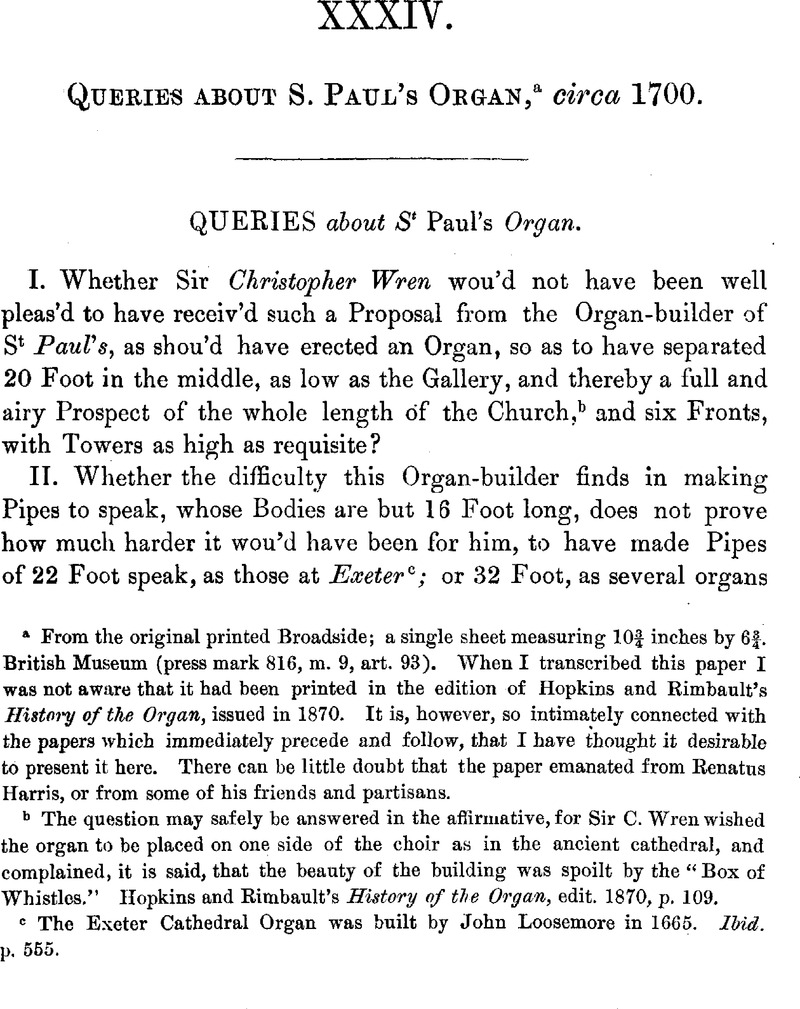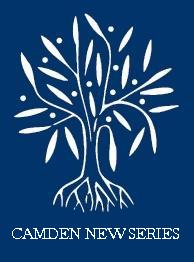No CrossRef data available.
Article contents
XXXIV. Queries About S. Paul's Organ,acirca 1700
Published online by Cambridge University Press: 24 December 2009
Abstract

- Type
- Documents
- Information
- Camden New Series , Volume 26: Documents Illustrating the History of S. Paul's Cathedral , March 1881 , pp. 165 - 168
- Copyright
- Copyright © Royal Historical Society 1881
References
page 165 note b The question may safely be answered in the affirmative, for Sir C. Wren wished the organ to be placed on one side of the choir as in the ancient cathedral, and complained, it is said, that the beauty of the building was spoilt by the “Box of Whistles.” Hopkins and Rimbault's History of the Organ, edit. 1870, p. 109.Google Scholar
page 165 note c The Exeter Cathedral Organ was built by John Loosemore in 1665. Ibid. p. 555.
page 166 note a These Queries were therefore written before the Choir was thrown open to the Dome. “The Choir of the new Cathedral of S. Paul was opened for divine service on the thanksgiving day for the peace of Ryswick .…. This was the first service in the Church since the fire in 1666, which was continued [sic] on the next and subsequent Sundays, and with uninterrupted regularity to the present hour.” The Thanksgiving Day was 2 Dec. 1697. Elmes, Life of Wren, pp. 483–4Google Scholar. See also Evelyn's Diary. Dr. Rimbault possessed an original MS. anthem, inscribed, “This was made by Dr. Blow, Oct. ye 15,1697, at Hamton town, for the opening of S. Paul's Cathedral.” History of the Organ, p. 110Google Scholar, note.
page 167 note a The Temple Organ was built by Father Smith. See the curious story told by Hopkins and Rimbault, pp. 101–106, of the contest between the rival organ builders, Smith and Harris. Each built an organ; the two organs were erected simultaneously in the Temple Church; were played by some of the best players of the day; finally, the Templars met in council, the choice was to be made by vote—there was an equality of votes—and some say that Jefferies, afterwards Lord Chief Justice, gave the casting vote in favour of Smith's instrument.
page 167 note b The organ of S. Andrew's Undershaft was built by Renatus Harris. It cost £1,400, and was opened on 31 May, 1696.
page 167 note c Evidently the critic had not seen the original contract. See supra, p. 164.
page 168 note a The fire in 1699 broke out in a room “which was prepared for the operations of the organ builder.” Elmes, Life of Wren, 40, p. 486Google Scholar. Elmes, ' Life of WrenGoogle Scholar, published in octavo, 1852, speaks of the room as one “which was used as a working place for the organ builders:” seeming to imply that they were then at work. See supra, p. 158. The highest stone of the lantern on the cupola was placed in 1710 by Mr. Christopher Wren, attended by the venerable architect, &c. Elmes, ' Life, 4to, pp. 493–4.Google Scholar


